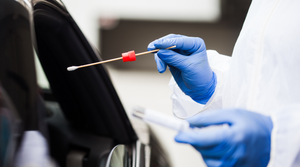How UDIs Can Make Device Companies More Innovative
June 28, 2013
The medical device industry has historically lacked a consistent system for tracking their products with standard unique identifiers. The need for such a system has been reinforced in recent years with the high-profile failures of metal-on-metal hip implants and ICD leads. In 2007, Congress approved legislation instructing FDA to implement a unique device identifier (UDI) system. Now, nearly six years later, such a tracking system is poised to go into effect soon, now that FDA has sent a final rule on UDIs to the Office of Management and Budget for review. So what will the import be for the device industry?
A UDI system has the potential to help medical device companies improve their entire ecosystem--both downstream and upstream, says Dave Medina, vice president of QAD Life Sciences. This fosters innovation because it enables them to gain a better understanding of their supply chain, helping them to gain a better understanding of how and where items are used across the ecosystem.
FDA is primarily concerned with the downstream element, which directly relates to patient safety. From a manufacturer's perspective, the downstream element also applies to brand protection and management.
The upstream perspective applies internally to a manufacturer--not just from a compliance perspective for recall management but also to traceability, Medina explains. The upstream component includes components, supply chain, and visibility all across the line. In order to do that, you have to have the UDI system embedded in the business and manufacturing processes, Medina says. That enables the ability to track batches and lots forwards and backwards across the supply chain. It provides device companies another method of measuring the quality of components from suppliers.
The device industry has the tendency to view UDI as a labelling issue. By contrast, "we see it as an embedded process issue," Medina says. "Embedding it in the process simplify compliance while giving you a lot more functionality. If done correctly, UDIs can link you to your patient base on an individualized base, all the way back through to your quality processes."
"There is one perspective where you can say 'I have a device and I have a problem in a patient so I need to initiate a recall,'" Medina says. "If you think of it as a labelling issue, now you bring it back and have identified the device. For instance, if it is a nonconformance issue that has caused a problem with one patient, the next step is to look at the batch of related devices.
"The other element is taking it all the way back," Medina says. The UDI that gets tracked to the manufacturing batch and lot enables the problem to be pinpointed. "Let's say I have a probe that was made from a bad batch of resin or there is an electrical problem. I need to have exposure to my components." A UDI compliance system would simplifies the process of going back to the components, raw materials, specifications, and deciding if the test specifications and design controls are in order. "With a holistic UDI perspective of embedding it into the process, you get to that information quicker," Medina says. "If you treat it as a labelling issue, then you view UDI as a label on a finished device. Although you can track the process, you don't get the same advantages."
The subject of UDIs will not be limited to solely the United States. The European Union has also recommended a UDI system, which would be harmonized across the continent. Similar to the U.S. requirements where companies are responsible for issuing their own UDIs, which would be included in a central database.
Brian Buntz is the editor-in-chief of MPMN. Follow him on Twitter at @brian_buntz and @mpmn.
About the Author(s)
You May Also Like


